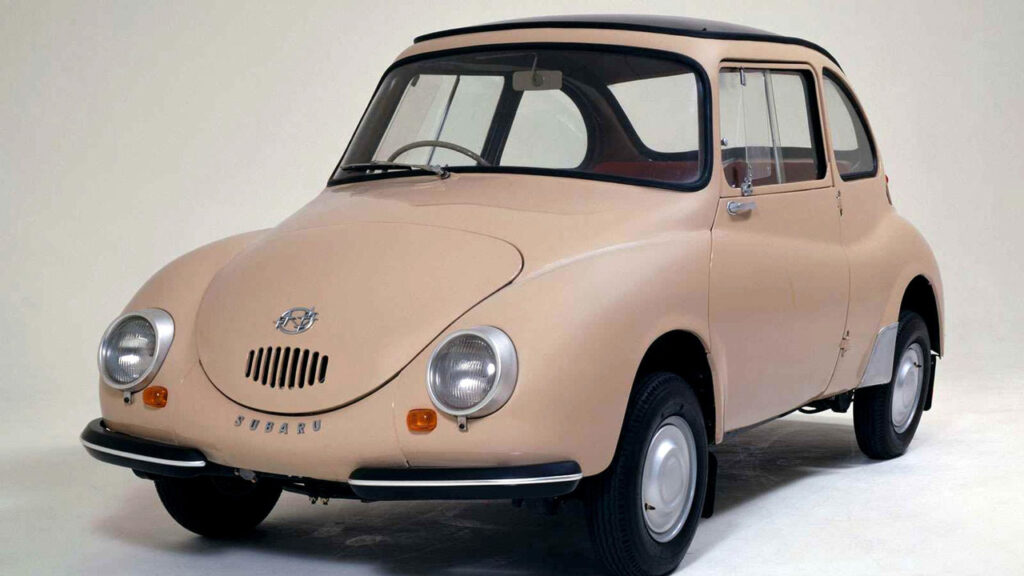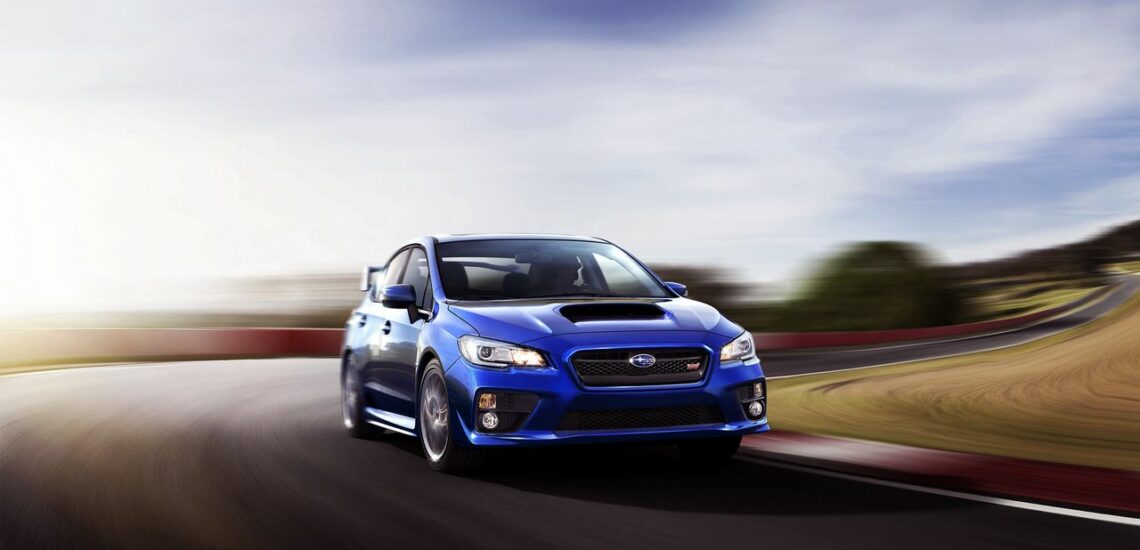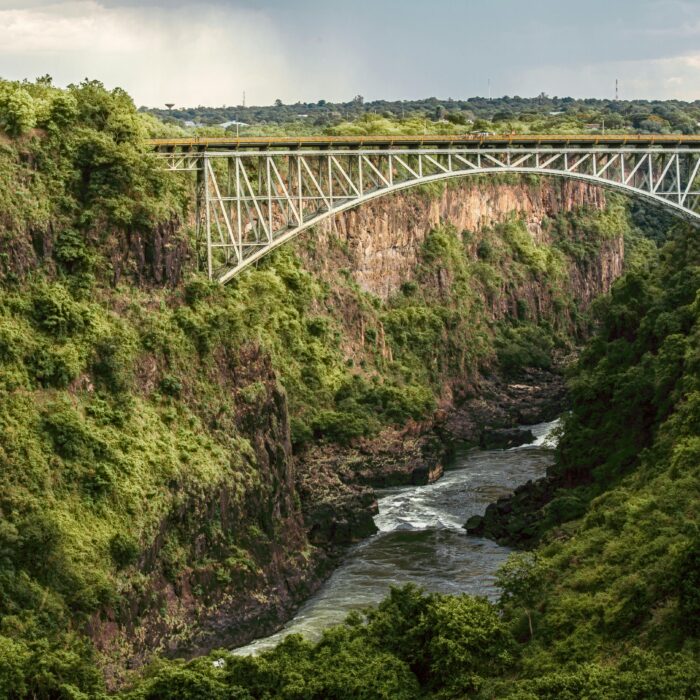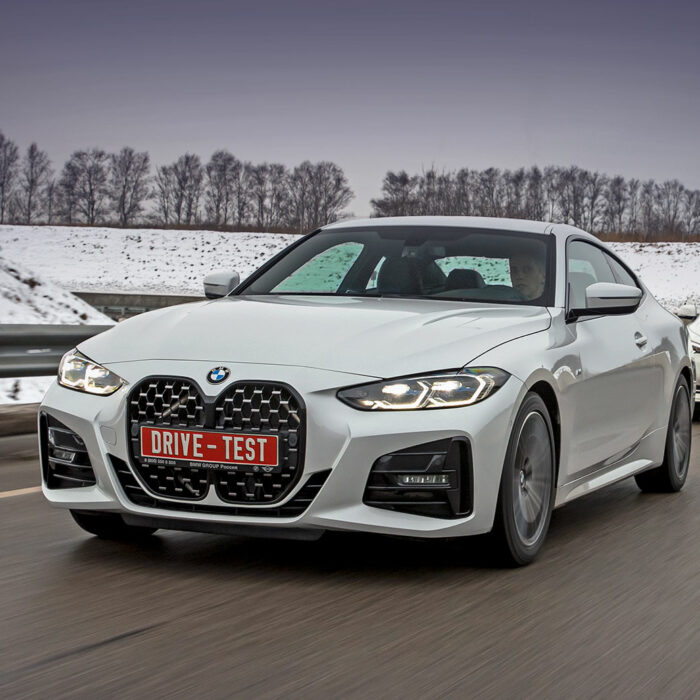As soon as the word “Subaru” sounds somewhere, you immediately imagine a four-wheel-drive monocoque, typical of a Japanese car. The production volume of Subaru is about half a million annually, but these cars are sold in a hundred countries around the world. Japanese quality and inimitable characteristics attract the attention of both fans of everyday driving and rally drivers to Subaru. What is so unique about Subaru, why this car brand has been popular for more than half a century, and how it was created – all these points will be discussed in this article.
How did Subaru appear?
In 1954, a competition was announced for the best name of the first car created by the combined companies that became part of the Fuji Heavy Industries corporation (FHI). Since there were six of these companies (the most persistent of the 12 production associations formed after the predecessor of Fuji Heavy Industries, Fuji Sangyo Ltd., which was engaged in production of motor boats, carriages, buses and gasoline engines), the concern partly reflected the name of the constellation Pleiades. In the Pleiades, which are in turn part of the constellation of Taurus, the naked eye sees six bright stars – just out of more than two hundred. In addition, the name of the new car had to be Japanese. And the term “subaru” in Japanese means “to bring together, to unite”. That’s how the president of FHI, Kenji Kita, became the author of this idea with the name, because the ones that were offered by the contestants didn’t satisfy him. At the same time, the famous Subaru logo appeared. The emblem contained six gold stars enclosed in an oval. The Subaru logo, as well as the name of the car brand itself, is a symbol of patriotism and desire for something new and unique.
Kita, by the way, was an ardent fan of everything related to cars. It was he who uttered the phrase that defined the strategic concept of the Fuji Heavy Industries corporation: “If you’re going to build a car, build a full-fledged car”.
Way to the first car
Long before a prototype appeared, which received the name Subaru in 1954, the Aviation Research Laboratory was opened in the Japanese city of Nakagama. Chikuhei Nakajima, an aviation enthusiast and aspiring engineer, decided to take that step. The laboratory was opened in 1917, when aviation as such didn’t exist in Japan at all, and in the very place that is still the location of the main modern production base of the Subaru company – in Gunma Prefecture. After 14 years, the laboratory was transformed into an aircraft manufacturing company called Nakajima Aircraft Co., Ltd., and in World War II, Nakajima’s planes were very, very popular – until 1945. But post-war legislation forbade Japan to have an army, and all factories, one way or another related to military subjects, were closed. Nakajima Aircraft Co., Ltd. was renamed Fuji Sangyo Ltd., retaining its specialists and core staff. The production of military aircraft was converted to the production of carriages and buses, which used the aircraft spare parts remaining from the wartime. Later, the range of products produced by Fuji Sangyo Ltd. was expanded with gasoline engines, motor boats, and motor scooters with the funny name Rabbit. But there was no talk of cars yet.
In 1950, Fuji Sangyo Corporation Ltd. broke up into independent firms, and some of them then closed. Three years later, the surviving ones (there were five of them) decided to become a single production company, Fuji Heavy Industries, again. In 1954, the latter was joined by another, sixth, corporation. The new concern began to produce chainsaws and diesel buses, scooters and jet planes. Production expanded and profits increased. In the same 1954, the engineering thought of Fuji Heavy Industries gave birth to the idea of a passenger car prototype with the working name P-1 (in fairness, it should be added that some of the drawings were purchased from the French brand Renault). Up to that point, the Japanese automobile industry had never used a monocoque body construction. A monocoque is a type of spatial construction in which the outer shell is the main and usually the only supporting element. The P-1 had excellent driving characteristics, was comfortable and elegant. However, the financial difficulties of Fuji Heavy Industries Corporation didn’t allow them to start its mass production.

Debut of Subaru
The Subaru R-1 prototype played a role in the development of the Subaru 360 and Subaru 1000 models. Life in post-war Japan was extremely modest – the bloodless country saved on almost everything. They had to stimulate their own production, for which they announced a sharp reduction in taxes on the ownership of small cars – no longer than 3.6 m and with a gasoline consumption of less than 3.4 liters per 100 km. Specialists of the FHI corporation thought about creating a car that would meet all the above requirements, and the Subaru 360 was created as a result of their professional efforts. The length of the car was even less than the required limit (only three meters), it had a two-cylinder two-stroke engine with a volume of 358 cc and 16 hp. The engine was located at the rear. In addition, the 360 model had a modern design with the use of plastic and aluminum and an independent rear suspension. The Fuji Heavy Industries corporation became the first in Japan to meet all the requirements for limiting the characteristics of cars, and as a result, its position strengthened in the car market. In Japan, the Subaru 360 was given the good nickname “Ladybug”. The Subaru 360 overtook competitors, turning out to be extremely successful in every sense. The production rate became fantastic – while in 1958 they managed to sell 604 cars after presentation, a year later, 5111 cars were produced and sold, and in 1961 – more than 22 thousand! Subaru became the leading manufacturer of cars of that class in Japan, and the 360 model acquired new body types – station wagon and coupe with a soft top. The debut was more than impressive. The 360 model was produced until 1970. Such cars are still rarely seen in Japan. According to the stories of local motorists, to give way to the “Ladybug” and thus pay tribute to its age is considered a good omen and promises a good day.
Subaru’s period of prosperity – from the 1960s until present
In 1961, the managers of the automobile concern decided to divide the production of cars into the manufacturing of passenger ones and trucks. Therefore, the company Subaru Sambar was founded, aimed at the production of pickups and vans. It was a division of the concern and wasn’t an independent firm. The main production, in turn, was still engaged in the manufacturing of the Subaru 360, but new options were also developed. The 1965 Subaru 1000 was one of the most successful models. It was quite avant-garde both in appearance and technical characteristics, as it was the first “Japanese” with front-wheel drive. In addition, it was in this model that the first four-cylinder opposed engine with a volume of 997 cc was installed. The power of the Subaru 1000 was 55 hp. Four years later, in 1969, the Subaru 360 was replaced by the R-2 model, and the Subaru 1000 – by the Subaru FF model.
The domestic, Japanese, market constantly demanded more and more new cars, production expanded. Ten years later, in 1979, 150 thousand Subaru cars were produced, and in 1980, 202 thousand cars left the assembly lines of the FHI concern. That progress was largely due to the appearance in 1971 of the Subaru Leone model – the world’s first all-wheel drive passenger car, which aroused great interest among both specialists and ordinary buyers. Subaru’s original all-wheel drive system (4WD) allowed the car to rise to the top of the car market and become the best-selling all-wheel drive passenger car. It was Leon who replaced the Subaru FF model. A year later, the R-2 model range was also updated – the Rex with a two-cylinder 356 cc engine and water-cooling was released.
Well, the Leon began a triumphant march around the world – in the United States alone, in the mid-1970s, 30 thousand Subaru Leone “Japanese” were sold. By that time, every fourth car of the FHI concern was exported. In 1977, models exported to the United States were joined by the Subaru Brat (a truck with a two-seat cab and a small platform). It was loved for its ability to go anywhere, which more than satisfied the needs of American youth who love to spend their free time in nature.
Only five years later, the production of turbocharged cars began. In general, the 1980s were extremely productive for Fuji Heavy Industries. It was that decade that brought the following to the world:
– the seven-seat all-wheel-drive Subaru Domingo minibus model with swivel and reclining seats, first developed in Japan;
– the Justy model, which for the first time in the world was equipped with the Electro Continuously Variable Transmission (ECVT);
– the Alcyone (XT) luxury sports car, which had a six-cylinder opposed engine with a capacity of 145 hp and many cutting-edge features and functions;
– the all-wheel-drive Legacy, a sedan or a cross-country station wagon of the D-segment, which replaced the Leonе, and became the most popular in the history of Subaru – more than 3.5 million copies of this model were produced.
In the United States, Subaru-Isuzu Automotive began production, and the Gran Turismo class car, the Subaru SVX, an all-wheel-drive sports coupe with such an avant-garde design that it’s still not outdated, was presented at the Tokyo Motor Show. In particular, the body of the Subaru SVX was fast, dynamic, which was achieved by using glass-to-glass bonding technology over the entire surface around the cab.
All models met the traditional features of Subaru cars: excellent handling, stable behavior on the road, comfort when driving on rough terrain and efficiency.
Subaru on rally tracks and its achievements in racing
Subaru’s list of car racing wins is impressive. It all started back in 1989, when the Legacy set two world and 13 national records on the test site track in Arizona. It covered 100,000 km distance at an average speed of 223.345 km/h in 19 days of continuous driving on the track with stops only for refueling, changing supplies and, of course, drivers. At the same time, the Legacy Station Wagon in standard configuration (for the Japanese domestic market, with the 2.0 twin turbo engine) set a speed record for production station wagons – 249.981 km/h – on the highway in the vicinity of Salt Lake City.
In 1990, FHI started working with the British company Prodrive. The creators of Subaru decided to participate in motorsport, and Prodrive began to prepare Subaru for competition. Already in the same year, the Legacy won the Safari Rally in a Group N. This is how Subaru’s brilliant path in rally and circuit championships, where cars of this brand won more than once, began. At the same time, a purely urban small-class car, the Vivio, came off the assembly lines. It was equipped with a 658 cc engine and a well-known variator. There was also a “sports” modification of this car, which accelerated to 100 km/h in just 5.4 seconds thanks to a biturbed engine with a capacity of 102 hp (with the same volume). Driver Colin McRae successfully performed at the Safari Rally on a rally car built on the basis of the Vivio. 1992 brought another premier – the Impreza, which has become a legendary car due to its constant participation in rallies and is equipped with a whole range of engines – from 1.6-liter to two-liter turbocharged. The Impreza has become a real example to follow for other automakers. In 1993, a new generation of the Legacy was introduced; in the same year, the model won one of the stages of the WRC in New Zealand for the first time. In 1994, a test batch of the Outback model, a new class car, a light sports station wagon with SUV capabilities, appeared in the United States of America.
The last quarter-century in Subaru’s history
The Subaru Sambar EV electric car was developed by FHI in 1995, when many car manufacturers were just beginning to think about the possibilities of such models.
In 1997, Subaru created a “reference car” – a car that was difficult to classify because it was a cross between a station wagon and a SUV. That car was the Subaru Forester, equipped with a two-liter opposed engine and a five-speed gearbox.
1999 was the year of alliances – FHI signed business agreements with General Motors and Suzuki Motor Corporation. To date, Subaru produces its cars at nine factories, five of which are located in Japan. But the Fuji Heavy Industries concern is also engaged in other branches of the transport industry (aviation and railway) in addition to cars.
The Subaru Baja is a light mid-size all-wheel drive pickup truck that was born in 2002. The design of its body combines the features of both a pickup truck, due to the small open body compartment at the rear, and a SUV. Another feature of the body construction is that the partition located behind folding rear seats can be removed if it’s necessary to transport oversized cargo. This option of the Subaru Baja is called Switchback by the manufacturer.
In 2003, a new slogan “Think, Feel, Drive” appeared, which represents Subaru’s automotive ideals: intelligence and sensitivity. This means that Subaru is committed to creating a high-quality car that offers a mix of driving, environment, and safety.
2005 gave the world the Subaru B9 Tribeca, which as a SUV corresponds to the next generation of cars with the crossover concept.
As distinctive features of Subaru, we can confidently call such branded developments, that are now used all over the world, as all-wheel drive (which still remains a trademark of Subaru), opposed engines and a monocoque body construction. And, of course, high quality and remarkability of cars that demonstrate excellent performance both in everyday use and motorsport.
But you should know that the concern that produces Subaru cars has never aspired to mass production. Its cars were originally a piece product with unique characteristics.

Subaru, the famous “Japanese” in the world of cars, is equally good for those who travel in it as a passenger, and for those who drive it. However, don’t forget about the documents that any driver must have with him. We invite you to quickly and easily process an international driver’s license on our website. It won’t take you much time and effort, but this document is useful when driving not only a Subaru.

Published February 25, 2021 • 11m to read






